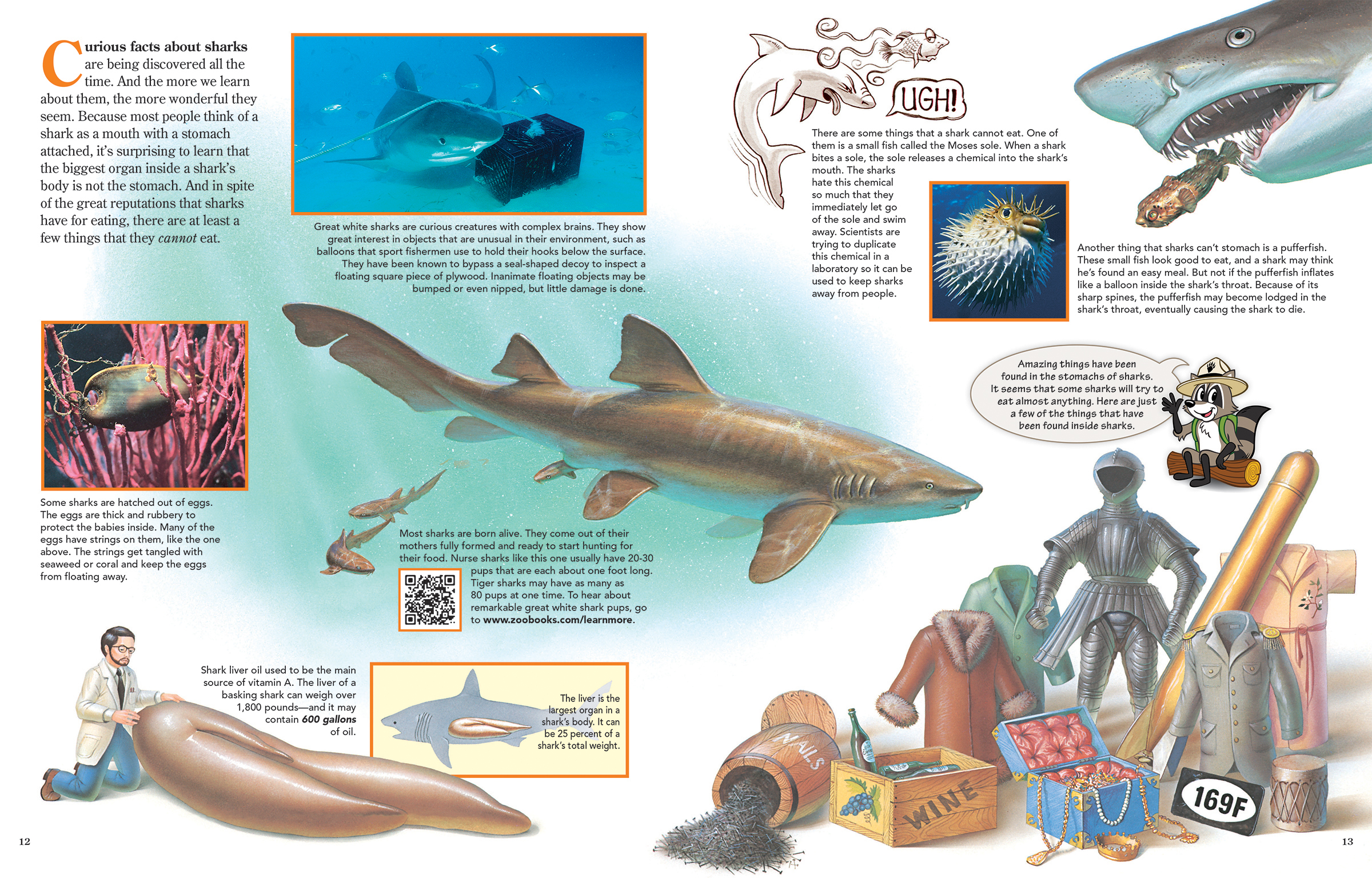
Curious Facts
ByCurious facts about sharks are being discovered all the time. And the more we learn about them, the more wonderful they seem. Because most people think of a shark as a mouth with a stomach attached, it’s surprising to learn that the biggest organ inside a shark’s body is not the stomach. And in spite of the great reputations that sharks have for eating, there are at least a few things that they cannot eat.
Great white sharks are curious creatures with complex brains. They show great interest in objects that are unusual in their environment, such as balloons that sport fishermen use to hold their hooks below the surface. They have been known to bypass a seal-shaped decoy to inspect a floating square piece of plywood. Inanimate floating objects may be bumped or even nipped, but little damage is done.

Some sharks are hatched out of eggs. The eggs are thick and rubbery to protect the babies inside. Many of the eggs have strings on them, like the one above. The strings get tangled with seaweed or coral and keep the eggs from floating away.
Most sharks are born alive. They come out of their mothers fully formed and ready to start hunting for their food. Nurse sharks like this one usually have 20-30 pups that are each about one foot long. Tiger sharks may have as many as 80 pups at one time. To hear about remarkable great white shark pups, go to www.zoobooks.com/learnmore.
Shark liver oil used to be the main source of vitamin A. The liver of a basking shark can weigh over 1,800 pounds—and it may contain 600 gallons of oil.
The liver is the largest organ in a shark’s body. It can be 25 percent of a shark’s total weight.
There are some things that a shark cannot eat. One of them is a small fish called the Moses sole. When a shark bites a sole, the sole releases a chemical into the shark’s mouth. The sharks hate this chemical so much that they immediately let go of the sole and swim away. Scientists are trying to duplicate this chemical in a laboratory so it can be used to keep sharks away from people.
Another thing that sharks can’t stomach is a pufferfish. These small fish look good to eat, and a shark may think he’s found an easy meal. But not if the pufferfish inflates like a balloon inside the shark’s throat. Because of its sharp spines, the pufferfish may become lodged in the shark’s throat, eventually causing the shark to die.
Amazing things have been found in the stomachs of sharks. It seems that some sharks will try to eat almost anything. Here are just a few of the things that have been found inside sharks.

